Jewish Burial Society: Sewing the Shrouds and The Washing of the Body
Artist Unknown
ca. 1780
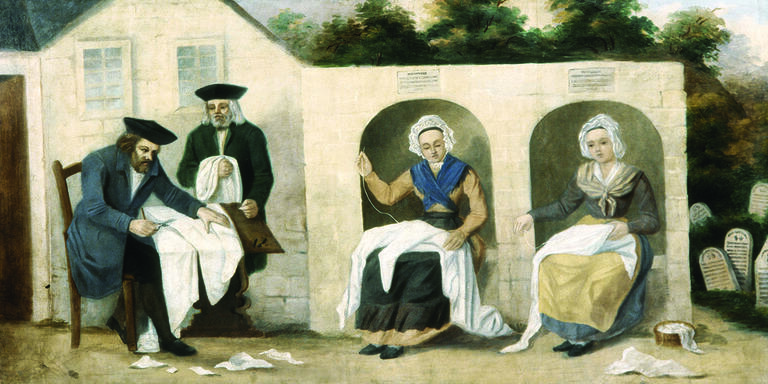

These rare images from a set of some fifteen paintings depict acts of lovingkindness to the dead performed by members of the Jewish burial society, or ḥevra kadisha, in Prague. Participation in this voluntary society, for men and women, was considered a great honor and an act of ultimate generosity. The paintings were probably displayed in the meeting hall of the ḥevra kadisha, though they are now hung in the Jewish Museum in Prague. They detail the stages involved in the care of the dying and the dead, through prayers at the bedside, washing the body, preparing the shrouds, the burial, and its aftermath.
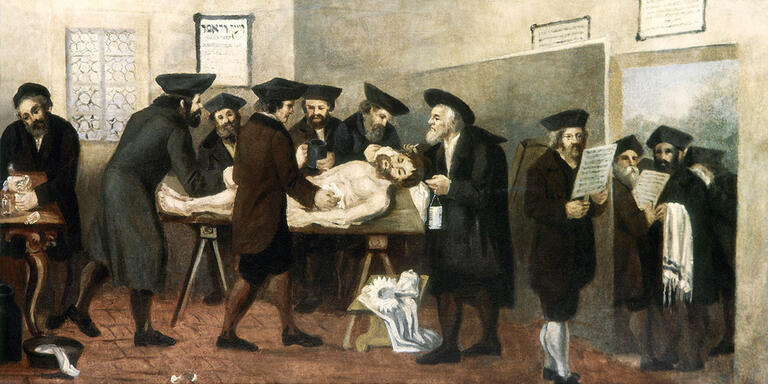

These rare images from a set of some fifteen paintings depict acts of lovingkindness to the dead performed by members of the Jewish burial society, or ḥevra kadisha, in Prague. Participation in this voluntary society, for men and women, was considered a great honor and an act of ultimate generosity. The paintings were probably displayed in the meeting hall of the ḥevra kadisha, though they are now hung in the Jewish Museum in Prague. They detail the stages involved in the care of the dying and the dead, through prayers at the bedside, washing the body, preparing the shrouds, the burial, and its aftermath.
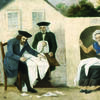
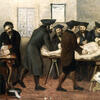
These images from a series depict acts of loving-kindness to the dead performed by members of the Jewish burial society, or ḥevrah kadisha, in Prague. Participation in this voluntary society, for men and women, was considered a great honor and an act of ultimate generosity.
Credits
-
© Jewish Museum in Prague.
-
© Jewish Museum in Prague.
Published in: The Posen Library of Jewish Culture and Civilization, vol. 6.
You may also like

Gender Roles
Engage with the gendered dimensions of Jewish life and discover lost voices of Jewish women.
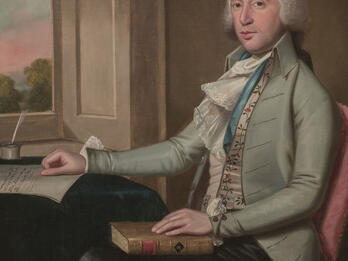
Portrait of Benjamin S. Judah
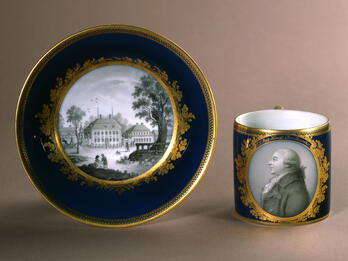
Cup and Saucer
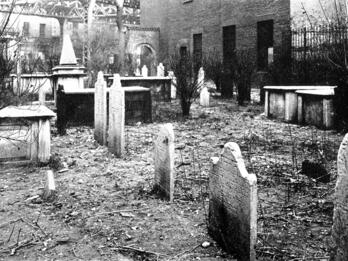
Chatham Square Cemetery
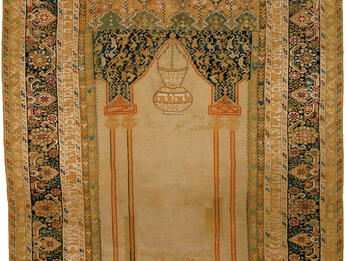
Torah Ark Curtain (Gördes)

Hand-Washing Basin
Participation in a voluntary burial society (ḥevra kadisha), for men and for women, was considered a great honor and an act of ultimate generosity. The 1780 image on the left from the Prague burial society shows the creation of the simple burial shroud traditionally used to dress the body of the deceased. Women participated fully in this ritual. They had their own burial societies and were just as attentive to the female dead as men would be toward the male dead. Yet, we can see that there is a clear gendered distinction in their specific roles in creating the burial shroud along with a depiction of an older woman guiding a younger one in the task of sewing.
What can we learn about the importance of preparing bodies for burial in historical Jewish communities from these images?
How might the male and female roles depicted in the sewing the shrouds image reinforce distinct gender roles within communities of Jewish practice?
If your community had a ḥevra kadisha, would you be inclined to volunteer for the role?
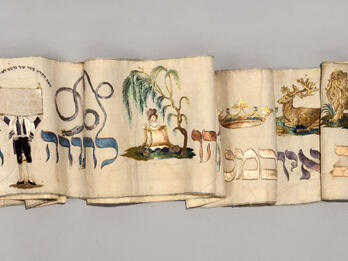
Related Guide
Material Culture and Modernity
Discover the many types of objects—furnishings and clothing, jewels and medals, wares—crafted by Jews or specifically for use by Jews.
You may also like

Gender Roles
Engage with the gendered dimensions of Jewish life and discover lost voices of Jewish women.

Portrait of Benjamin S. Judah

Cup and Saucer

Chatham Square Cemetery

Torah Ark Curtain (Gördes)


